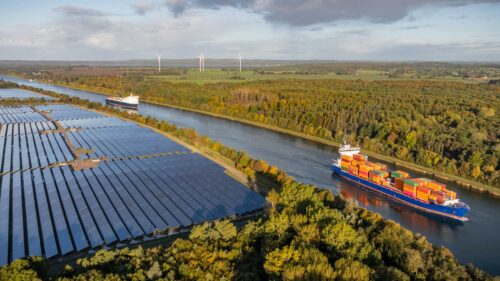
We are at an important inflection point in climate finance. Net-zero aligned targets set with good intentions are now met with challenges from all sides — technical, economic, legal, and reputational. While some fear a retreat in ambition, we see this as an opportunity to check our assumptions, ask better questions, and ultimately chart a new path forward. We need a recalibration — one that will ensure that the role of banks in the energy transition is rightsized to focus on deals, not just disclosure.
In the last decade, banks have overhauled governance, launched net-zero strategies, and built internal capability at speed. Climate has moved from the margins, now enjoying board-level oversight and increasing attention from supervisors, shareholders, and clients. Banks are adept at answering questions such as: What is your portfolio emissions footprint? How is your strategy aligned with net zero? What are your main physical climate and transition risks?
But while momentum and expertise have grown, the impact on the real economy remains limited. Emissions continue to rise and clean infrastructure buildout is facing significant economic and political headwinds. If the point of commitments and targets was always to see finance flow to the transition, then what if the better question is: What is stopping the transition-enabling transactions from happening?
Moving forward, we need a sharper, more pragmatic understanding of banks’ role in the energy transition. To avoid slipping into mere deck-chair rearrangement, the next phase of climate finance cannot rely on frameworks and commitments alone. It must be defined by successfully executed deals. This change requires those who have focused on banks’ role in accelerating the transition to reflection on where we got things right, where we were wrong, and how we can help banks do deals differently to maintain returns while improving climate outcomes. Banks are not moral agents or policy substitutes. They are commercial actors operating within regulatory, fiduciary, and risk-based constraints.
Designing a new model for banks’ role in the energy transition geared towards on-the-ground results rather than merely incentivizing transparency is possible, but we must start now and we must do it together. In the report, we outline what this new model could look like.
We highlight the four essential shifts we think are needed to make this happen.
- Recognize banks as commercial actors. Banks face real limits — fiduciary, regulatory, and economic. Expecting them to offer unlimited concessional climate capital or lead without systemic support is a misunderstanding of their business model and role in society. We need to double-down on the reality that climate-smart investing is just smart investing. And where that is not yet the case, work to close the gap.
- Get capital flowing by playing into banks’ strengths. The energy transition is not business as usual, but we do need banks to do more of what they are good at: structuring deals, deploying capital, and advising clients. We need to help banks diagnose real-world bottlenecks, understand how projects are future-proofed, strengthen communication to investors, and engineer creative syndicates and partnerships. Banks already have the tools to implement many of these solutions. But meeting the moment may also require building new areas of comparative advantage through innovative structuring, cross-sector collaboration, and even the development of entirely new business lines focused on transition finance.
- Build transition intelligence infrastructure and capacity. To make this possible, we need to zero in on the few key metrics and data points that will identify and incentivize transition-enabling transactions. Conventional metrics and methodologies have gaps and biases, and they often rely on high-level or aggregated data on companies and sectors. They have not always led to helpful insights, incentives, or market signals. Going forward, the focus should be on prioritizing insights that guide financial decision-making.
- Right-size the role of banks within an enabling system. The expectation that banks (or any part of the financial sector) could drive the energy transition was myopic. It didn’t fully factor in the bigger picture: the complex, interconnected spider webs that comprise the financial and real economies. To create a constructive environment going forward, we must acknowledge and work with (and through) the internal and external dependencies that shape every financial and business decision.
We must embed climate in the business case of finance and link it to growth, competitiveness, and long-term value creation. That means aligning climate ambition with how banks make decisions, serve clients, and structure transactions. The goal is to evolve the way we pursue the ambitions set by banks by focusing on the outcomes, not just the metrics and optics. Recognizing the limits of current tools and expectations does not diminish what’s been accomplished but allows us to learn and strengthen our ability to move forward. To achieve real progress we must work together—across finance, policy, and civil society to remove barriers, align incentives, and support transactions that enable the energy transition. Climate finance has matured on paper. Now it must deliver in the real and financial economy, or risk irrelevance.
This report aims to recalibrate this conversation and chart a constructive path forward for understanding the banking sector’s role in the energy transition. RMI is committed to making these changes in our own work and helping others navigate this turning point in climate finance. To begin, we offer reflections on how we got here, why we got here, and where we collectively need to go next. Getting our next steps right could be the difference between a decade of market-shifting transactions rather than another decade of ambition statements with limited action.
Acknowledgements: We would like to thank those who contributed to this project, including Valeriya Azarova, Nabil Bennouna, Nicholas Dodd, Hannah Hall, Tricia Holland, Whitney Mann, Estefanía Marchán, and James Mitchell.
